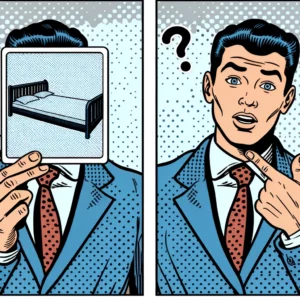Stimulus Control Transfer
Table of Contents
In this post, we will be covering stimulus control transfer, task number eleven on the RBT Competency Assessment. Stimulus control transfer is a crucial technique in the field of Applied Behavior Analysis (ABA). It involves transitioning the control of a behavior from one stimulus to another, ensuring that the behavior is maintained under the new stimulus conditions. This technique is essential for promoting independent behavior and enhancing the learner’s ability to respond appropriately to different stimuli.
Welcome back to our RBT Competency Assessment blog post series! In this series, we are exploring each task on the RBT Competency Assessment to help new Behavior Technicians (BTs) prepare for their initial competency assessments and provide a valuable refresher for Registered Behavior Technicians (RBTs) renewing their certification.
We will cover what stimulus control transfer is, why it is important, and how it is used in ABA. Additionally, we will provide a detailed example of stimulus control transfer in action to help you understand its practical application. By mastering stimulus control transfer techniques, RBTs can significantly enhance their ability to teach new skills and promote greater independence in their clients. Let’s begin by defining stimulus control transfer and discussing its role and significance in ABA.
What is Stimulus Control Transfer?
Definition and Explanation:
Stimulus control transfer involves transitioning the control of a behavior from one stimulus to another, ensuring that the behavior is maintained under the new stimulus conditions. In the context of Applied Behavior Analysis (ABA), this technique is used to help learners respond appropriately to different stimuli by gradually shifting control from an initial prompt or cue to a more natural or functional stimulus.
Role in ABA:
In ABA, stimulus control transfer is a key component of teaching and maintaining new behaviors. It helps ensure that behaviors learned in structured settings can be performed independently in natural environments. By systematically transferring stimulus control, behavior analysts can help learners generalize skills and respond accurately to everyday cues and prompts.
Importance of Stimulus Control Transfer in Skill Acquisition:
Stimulus control transfer is crucial for promoting independence and flexibility in learners. It allows them to apply learned behaviors in various contexts and under different conditions, enhancing their ability to adapt and function effectively in real-world situations. This technique is essential for achieving meaningful and lasting behavior change.

Why is Stimulus Control Transfer Important?
Benefits of Using Stimulus Control Transfer Techniques:
- Promotes Independence: By transferring control from prompts to natural stimuli, learners become more independent in performing behaviors without constant guidance.
- Enhances Generalization: Stimulus control transfer helps learners apply behaviors across different settings and situations, promoting generalization and flexibility.
- Improves Accuracy: This technique ensures that learners respond accurately to appropriate stimuli, reducing errors and increasing the consistency of desired behaviors.
How Stimulus Control Transfer Aids in Learning and Behavior Change:
- Systematic Process: Stimulus control transfer involves a structured approach to gradually shift control from prompts to natural stimuli, ensuring learners can perform behaviors independently.
- Reinforcement of Desired Responses: By reinforcing correct responses to natural stimuli, learners are more likely to continue performing the desired behavior under new conditions.
- Reduction of Prompt Dependency: This technique reduces reliance on prompts, encouraging learners to respond to natural cues and signals.
Impact on Client Progress and Independence: Stimulus control transfer significantly impacts a learner’s ability to perform behaviors independently and adapt to different environments. By promoting generalization and reducing prompt dependency, this technique enhances learners’ overall competence and confidence in various settings. It supports the development of adaptive skills, contributing to greater independence and improved quality of life.
How Stimulus Control Transfer is Used in ABA
Detailed Explanation of the Stimulus Control Transfer Process:
Stimulus control transfer in ABA involves a systematic process of shifting the control of a behavior from an initial stimulus to a new, more natural stimulus. This process ensures that the learner can maintain the behavior under different conditions and in various environments. The primary goal is to enable the learner to respond correctly to the new stimulus without relying on the initial prompt. Here is a detailed explanation of the steps involved in this process:
Example of Stimulus Control Transfer: From Visual Prompt to Verbal Prompt
Introduction of Initial Stimulus: Initially, the child responds to a verbal prompt paired with a visual cue. For example, the Registered Behavior Technician (RBT) presents a picture of a bed and asks, “What do you sleep in?” The visual cue (picture of the bed) helps the child make the correct response.
Step-by-Step Stimulus Control Transfer Process:
Present the SD with Visual Prompt:
- Step 1: The RBT holds up a picture of a bed and asks, “What do you sleep in?”
- Step 2: The child responds, “bed.”
- Step 3: The RBT provides positive reinforcement, such as verbal praise, “Great job! You sleep in a bed.”
Remove the Visual Prompt and Re-present the SD:
- Step 4: The RBT removes the picture of the bed and asks again, “What do you sleep in?”
- Step 5: The child responds, “bed.”
- Step 6: The RBT provides immediate reinforcement, “Excellent! You sleep in a bed.”
Gradually Fade the Visual Prompt:
- Step 7: If necessary, the RBT can reintroduce the picture briefly and then quickly remove it again while asking the question, “What do you sleep in?”
- Step 8: The child continues to respond, “bed,” and receives reinforcement.
Achieving Independent Behavior: The goal is for the child to respond correctly to the verbal prompt without relying on the visual cue. By systematically removing the visual prompt and reinforcing the correct verbal response, the child learns to respond accurately to the verbal prompt alone.
Generalization and Maintenance: To ensure the behavior is maintained across different contexts, the RBT encourages the child to respond to the verbal prompt in various environments and with different people. This might involve:
- Practicing the verbal response in different settings, such as at home, in school, and in community settings.
- Reinforcing the behavior with different caregivers and peers to promote generalization.
By following these steps, RBTs can effectively transfer stimulus control from a visual prompt to a verbal prompt, promoting greater independence and verbal communication skills in their clients.
FAQ on Stimulus Control Transfer
The following FAQ section consists of the four most Googled questions on the topic of stimulus control transfer.
- Q: What is an example of stimulus control transfer?
- A: An example of stimulus control transfer is teaching a child to respond to the question “What do you sleep in?” with “bed” by initially using a picture of a bed and gradually removing the picture while still asking the question.
- Q: What are the four ways to transfer stimulus control?
- A: The four ways to transfer stimulus control are: prompt fading, prompt delay, stimulus fading, and stimulus shaping.
- Q: How does an RBT transfer stimulus control from a prompt to an SD?
- A: An RBT transfers stimulus control from a prompt to an SD by gradually reducing the prompt while maintaining the SD until the learner responds correctly to the SD alone.
- Q: What is the difference between prompt fading and stimulus control transfer?
- A: Prompt fading involves gradually reducing prompts to encourage independent responses, while stimulus control transfer involves shifting control from one stimulus to another, ensuring the behavior is maintained under the new conditions.
Final Thoughts
Stimulus control transfer is a fundamental technique in Applied Behavior Analysis (ABA) that plays a crucial role in teaching learners to respond appropriately to different stimuli. By systematically transitioning the control of a behavior from an initial stimulus to a more natural one, RBTs can promote greater independence and flexibility in their clients. This process not only enhances the learner’s ability to generalize skills across various contexts but also reduces prompt dependency, fostering more natural and effective communication and behavior patterns.
Mastering stimulus control transfer techniques is essential for RBTs, as it directly impacts the success of behavior intervention plans and the overall progress of clients. By understanding and implementing these strategies, RBTs can help clients achieve significant improvements in their daily lives, leading to greater independence and a higher quality of life.
Explore More Resources
If you found this guide on stimulus control transfer in ABA helpful, be sure to explore more resources on our website. We offer a wealth of information, including detailed articles, study guides, and practical tips to help you succeed as a Registered Behavior Technician (RBT).
Are you preparing for the RBT competency assessment? Check out our comprehensive study materials and mock exams designed to help you ace the test and become a confident, competent RBT.
For more information on becoming a Registered Behavior Technician and for the latest research and resources in Applied Behavior Analysis, visit the Behavior Analyst Certification Board (BACB) website.
Share this blog with your peers and colleagues to spread the knowledge and support the ABA community!



